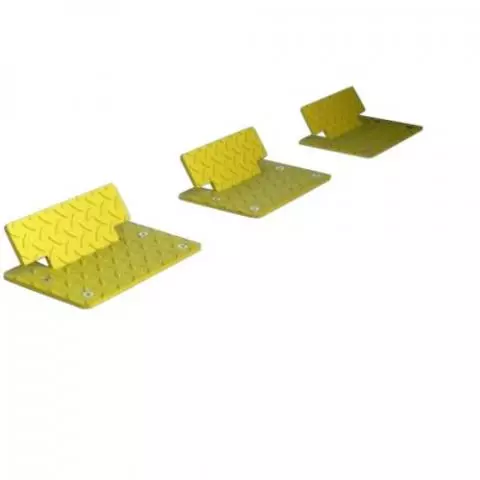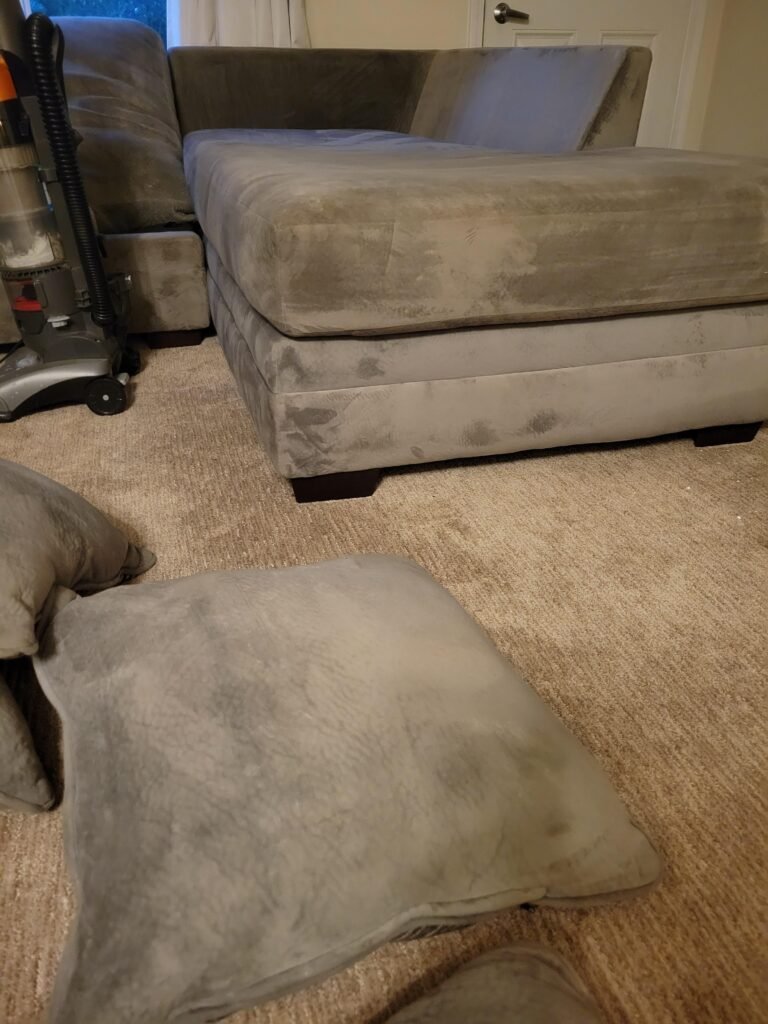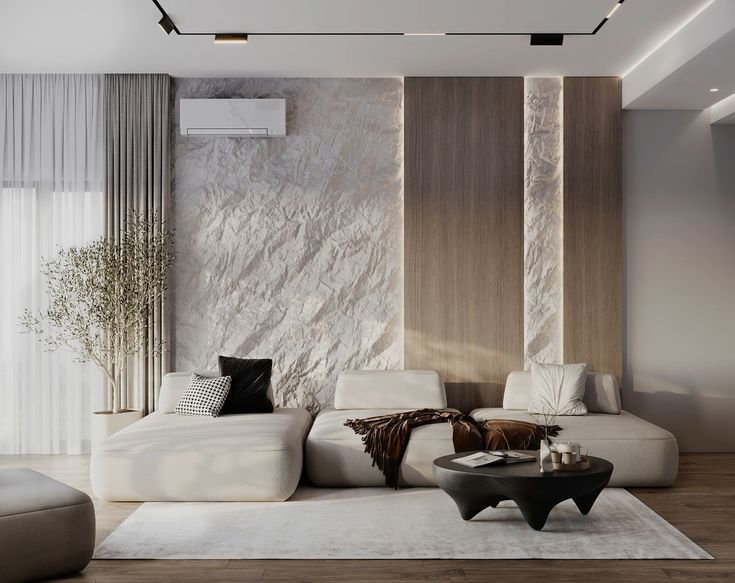As an Amazon Associate I earn from qualifying purchases.
Controlling the flow of traffic with furniture is essential for an organized space. It can improve movement and enhance the room’s functionality.
Have you ever felt your space was cluttered or difficult to navigate? You are not alone. Many struggle with arranging furniture to create a smooth flow of traffic. The way you place furniture can make a big difference. Properly arranged furniture can guide people through a room effortlessly.
It can prevent congestion and create a more welcoming environment. This blog will guide you on how to arrange furniture to control traffic flow. With a few simple tips, your space can become more organized and user-friendly. Let’s dive in and explore how you can achieve this.

Credit: www.daz3d.com
Introduction To Traffic Control With Furniture
The flow of traffic in a room is crucial. Proper traffic flow ensures ease of movement and a pleasant experience. Furniture plays a key role in this.
Importance Of Traffic Flow
Traffic flow affects how people move through a space. Good traffic flow makes a space more functional and comfortable. Poor traffic flow can lead to congestion and discomfort.
In homes, smooth traffic flow allows family members to move freely. In offices, it boosts productivity and reduces stress. In public spaces, it enhances visitor experience and safety.
Role Of Furniture In Traffic Management
Furniture placement is essential in managing traffic flow. Well-placed furniture guides movement and creates clear pathways. Misplaced furniture can obstruct movement and create bottlenecks.
Consider the following tips for effective furniture placement:
- Position large furniture against walls to open up central areas.
- Create clear pathways by spacing furniture at least 3 feet apart.
- Use smaller pieces to define areas without blocking traffic.
These simple adjustments can drastically improve the flow of traffic in any room.

Credit: hermeq.com
Choosing The Right Furniture
Choosing the right furniture is essential to control the flow of traffic in a space. The correct pieces can guide people naturally through your home or office. Let’s explore the types of traffic control furniture and their materials and durability.
Types Of Traffic Control Furniture
Different types of furniture can help manage the flow of people. Here are a few:
- Sofas and Chairs: Position these to create clear walkways.
- Tables: Use tables to define spaces and guide movement.
- Bookshelves: Bookshelves can act as dividers.
- Benches: Place benches near entryways to direct traffic.
Materials And Durability
The materials of your furniture affect their durability and appearance. Consider these options:
| Material | Durability | Appearance |
|---|---|---|
| Wood | Long-lasting, needs maintenance | Classic, warm |
| Metal | Very durable, cold to touch | Modern, sleek |
| Plastic | Lightweight, less durable | Variety of colors |
| Fabric | Comfortable, needs cleaning | Soft, cozy |
Choosing the right materials ensures longevity and complements your space. Balance style with functionality for optimal traffic flow.
Strategic Placement
Strategic Placement of furniture can significantly impact the flow of traffic in any space. By carefully arranging furniture, you can create a more functional and aesthetically pleasing environment. This approach not only enhances the room’s look but also improves its usability. Let’s explore how strategic placement can help in controlling the flow of traffic.
Identifying Key Areas
The first step in strategic placement is to identify key areas in the room. These areas include entryways, exits, and frequently used spaces like seating areas or workstations. Take note of where people naturally walk and gather. This will help you understand the flow of movement and where adjustments might be needed.
Consider the following key areas:
- Entrance and exit points
- Pathways to frequently used furniture
- High-traffic zones
Creating Natural Pathways
Once the key areas are identified, the next step is to create natural pathways. These pathways should be intuitive and unobstructed, guiding people effortlessly through the space. Arrange furniture in a way that naturally directs the flow of movement.
Here are some tips for creating natural pathways:
- Leave sufficient space between furniture pieces.
- Avoid placing large items in the middle of the room.
- Ensure pathways lead to all important areas without dead ends.
By following these tips, you create a smooth and logical flow of traffic, making the space more user-friendly.

Credit: hpccpgh.org
Safety Considerations
When arranging furniture to manage traffic flow, safety should be a priority. Proper placement of furniture can prevent accidents and ensure smooth movement. Focus on visibility and accident prevention to create a safe environment.
Ensuring Visibility
Good visibility is crucial for safe movement. Arrange furniture to keep walkways clear. Avoid placing large pieces in high-traffic areas. Ensure pathways are well-lit. This helps people see and avoid obstacles.
Mirrors can enhance visibility. Place them in strategic spots. This allows people to see around corners. It reduces the risk of collisions. Make sure mirrors are at eye level for maximum effectiveness.
Preventing Accidents
Sturdy furniture is essential. Secure heavy items to walls. This prevents tipping. Use furniture with rounded edges. Sharp corners can cause injuries. Choose low-profile pieces to minimize tripping hazards.
Use non-slip pads under furniture. This keeps items stable. It also protects flooring. Regularly check for loose parts or damage. Repair or replace as needed. Safety should never be compromised.
Aesthetic Integration
Controlling the flow of traffic with furniture can be both functional and beautiful. Aesthetic integration ensures that furniture not only directs movement but also enhances the space. It blends with the surroundings and maintains design harmony.
Blending With Environment
Furniture should blend seamlessly with the environment. Choose pieces that match the room’s colors and styles. This creates a cohesive look and prevents disruption in the visual flow.
For example, in a modern office, sleek metal and glass furniture can guide people while complementing the decor. In a rustic home, wooden benches or tables can direct traffic and add to the charm.
| Environment | Furniture Style |
|---|---|
| Modern Office | Metal and Glass |
| Rustic Home | Wooden Benches |
Maintaining Design Harmony
Maintaining design harmony is crucial for aesthetic integration. Ensure that furniture pieces do not clash with each other. This prevents visual chaos and makes spaces inviting.
Follow these tips to maintain design harmony:
- Choose a consistent color palette.
- Pick furniture with similar lines and shapes.
- Balance different textures and materials.
A consistent look makes it easier for people to navigate the space. It also enhances the overall ambiance.
Case Studies
Understanding how to control the flow of traffic with furniture can be complex. Case studies provide real-world examples of effective strategies. They offer insights into practical applications and results.
Successful Implementations
Several businesses have successfully controlled traffic flow with furniture. These examples highlight the benefits of strategic furniture placement.
| Business | Strategy | Result |
|---|---|---|
| Retail Store A | Placed shelves to create clear pathways | Increased customer engagement by 20% |
| Restaurant B | Used booths to guide patrons to seating | Reduced wait times by 15% |
| Office C | Arranged desks to minimize congestion | Improved employee productivity by 10% |
Lessons Learned
From these case studies, several lessons emerge. They can guide future implementations.
- Space Utilization: Efficient use of space ensures smooth traffic flow.
- Accessibility: Ensure all areas are easily accessible.
- Flexibility: Furniture should be easily movable for different needs.
Each successful implementation shows the value of thoughtful design. By learning from these examples, businesses can enhance customer experience and efficiency.
Expert Tips And Tricks
Controlling the flow of traffic with furniture is crucial for an efficient and functional space. Expert tips and tricks can make a significant difference. By understanding the right techniques, you can optimize your space and keep the flow smooth. Let’s dive into some expert advice.
Maximizing Efficiency
Position larger furniture pieces against walls. This opens up the center space. Use rugs to define specific areas. This helps guide movement. Place seating areas in a way that allows easy access. Ensure pathways are clear and wide enough. This avoids bottlenecks and keeps traffic moving smoothly. Arrange furniture to create natural walkways. This guides people without needing barriers.
Common Mistakes To Avoid
Avoid placing furniture in high-traffic zones. This creates obstacles and disrupts flow. Don’t use too many small pieces. They can clutter the space and confuse traffic patterns. Keep furniture proportionate to the room size. Oversized furniture can overwhelm a space and restrict movement. Avoid blocking windows and doors. This limits access and reduces natural light. Don’t ignore the function of the room. Make sure the furniture arrangement supports its primary use.
Future Trends
As urban spaces evolve, managing the flow of traffic with furniture is becoming crucial. Future trends focus on balancing aesthetics with functionality. These trends aim to create safer, more efficient environments.
Innovative Solutions
Innovative solutions in traffic control furniture are on the rise. Modular furniture designs allow easy reconfiguration of spaces. These designs can quickly adapt to changing needs. Smart benches and planters can guide pedestrian flow. They help in reducing congestion in busy areas.
Technological Advancements
Technological advancements are shaping the future of traffic control furniture. Sensors in furniture can monitor pedestrian movement. This data helps in optimizing the placement of furniture. Interactive digital displays on furniture can provide real-time information. They assist in guiding people efficiently through crowded spaces. LED lighting in furniture can improve visibility. It enhances safety during night-time.
Frequently Asked Questions
How Can Furniture Influence Traffic Flow?
Furniture placement can guide people through a space. Arrange pieces to create pathways and designate areas for different activities.
What Types Of Furniture Help Control Traffic?
Furniture like sofas, bookshelves, and tables can direct movement. Use them to define spaces and create natural walkways.
How Do You Arrange Furniture For Optimal Flow?
Start with key pieces like sofas or tables. Position them to create clear, unobstructed paths for easy movement.
Can Furniture Impact Room Functionality?
Yes, strategically placed furniture enhances functionality. It ensures smooth flow and accessibility, making spaces more user-friendly.
Conclusion
Arranging furniture can control traffic flow in your home. It’s all about balance. Place items thoughtfully to guide movement. Create clear paths for easy navigation. Use furniture to define areas and direct foot traffic. Small changes make a big impact.
Experiment with different layouts. Observe how space feels and functions. Adjust as needed for better flow. Your home will feel more organized and welcoming. So, start rearranging today. Enjoy a smoother, more efficient living space.
As an Amazon Associate, I earn from qualifying purchases.


